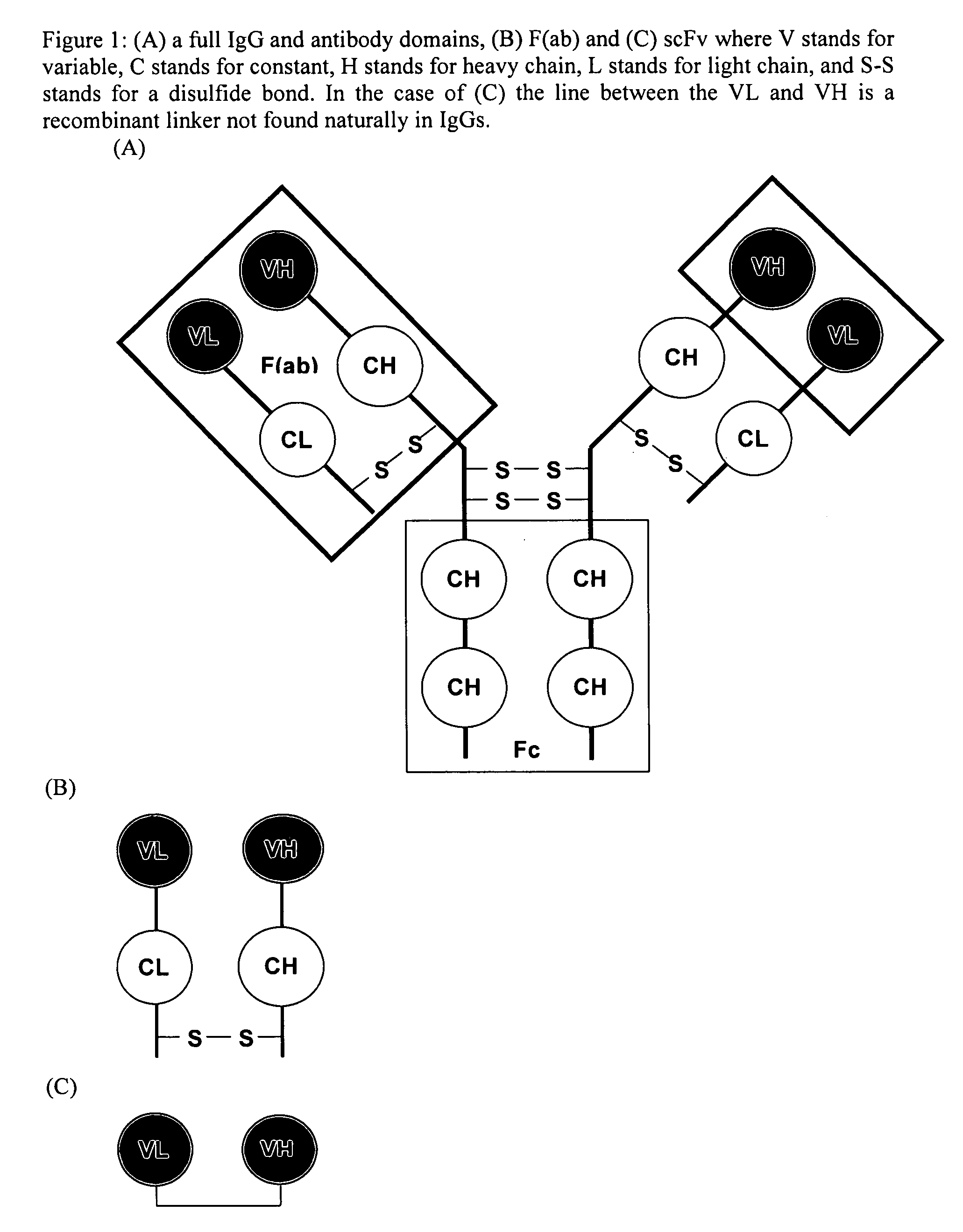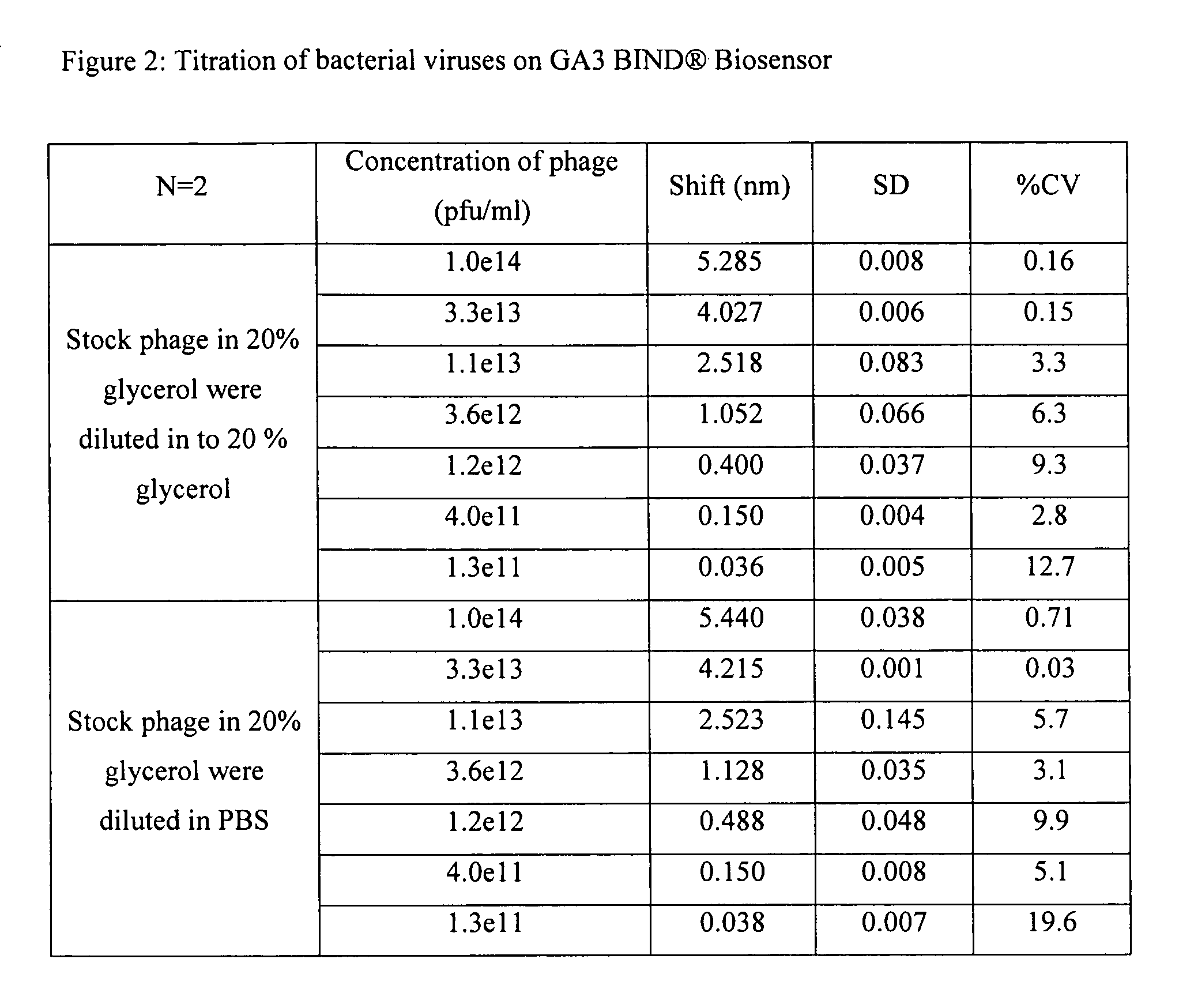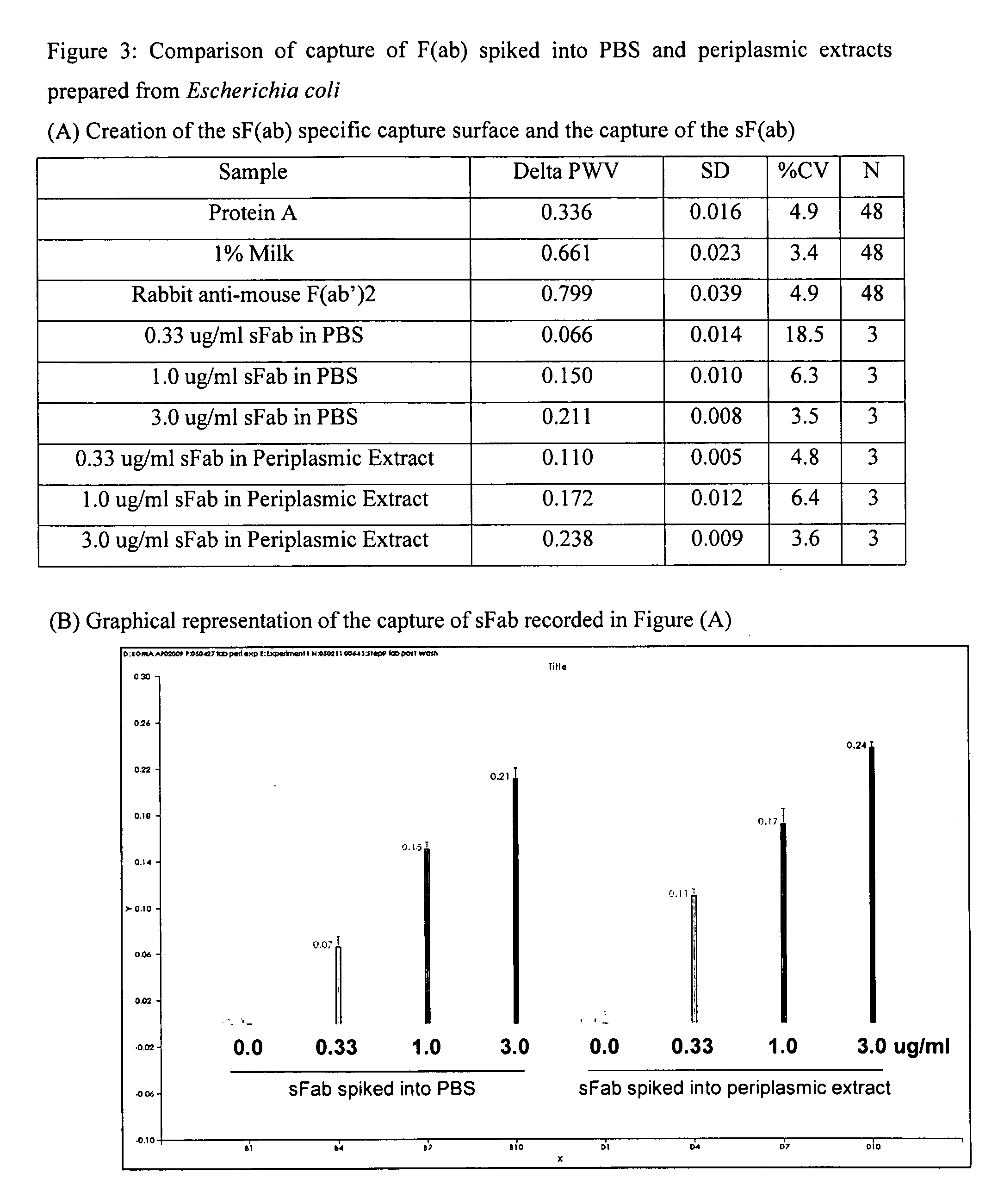Real time binding analysis of antigens on a biosensor surface
a biosensor and antigen technology, applied in the field of biosensors, can solve the problems of phage binding in facs and guava, cellular elisas are also difficult, and most researchers spend a lot of time and effort in cloning the display
- Summary
- Abstract
- Description
- Claims
- Application Information
AI Technical Summary
Benefits of technology
Problems solved by technology
Method used
Image
Examples
Embodiment Construction
Biosensors
[0020] In one embodiment, the methods of the invention comprise the use of a biosensor that can be used to, inter alia, detect inorganic or organic material, such as protein, DNA, small molecules, viruses, cells, and bacteria, without the requirement of a detectable label, such as fluorescent or radioactive labels. Numerous suitable biosensors can be used in the methods of invention, including, but not limited to, photonic crystal biosensors (e.g., colorimetric resonant reflectance biosensors, silver nanoparticle array biosensors), interferometric biosensors (e.g., RIFS, dual polarization interferometer, Hartman Interferometer), MEMS biosensors (e.g., cantilevers, resonant membranes), acoustic biosensors (e.g., quartz resonator), microwave biosensors (e.g., dielectric spectroscopy), surface plasmon resonance (SPR) biosensors (e.g., kreitchman SPR biosensors, imaging SPR biosensors, grating coupled imaging SPR biosensors), waveguide biosensors (e.g., input grating coupler...
PUM
 Login to View More
Login to View More Abstract
Description
Claims
Application Information
 Login to View More
Login to View More - R&D
- Intellectual Property
- Life Sciences
- Materials
- Tech Scout
- Unparalleled Data Quality
- Higher Quality Content
- 60% Fewer Hallucinations
Browse by: Latest US Patents, China's latest patents, Technical Efficacy Thesaurus, Application Domain, Technology Topic, Popular Technical Reports.
© 2025 PatSnap. All rights reserved.Legal|Privacy policy|Modern Slavery Act Transparency Statement|Sitemap|About US| Contact US: help@patsnap.com



